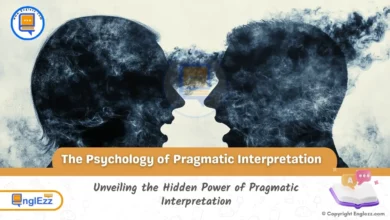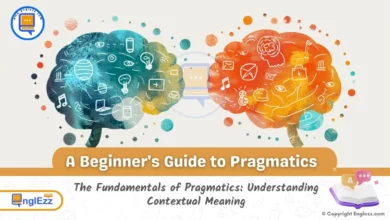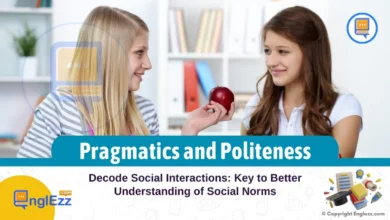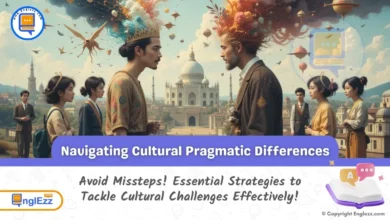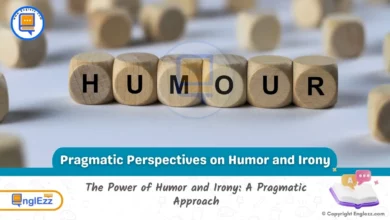In the intricate tapestry of human history, a single thread can weave together a rich narrative of cultural, social, and philosophical significance. For centuries, the concept of meaning has been a subject of inquiry, debate, and exploration, as civilizations have sought to understand the fabric of reality and their place within it. Yet, amidst the complex interplay of ideas, a thread has remained resilient, unbroken, and steadfastly pragmatic – the thread of meaning itself. This thread, worn by the hands of time, has been woven into the fabric of human experience, influencing the course of art, science, philosophy, and politics.
Table of Contents
- The Evolution of Pragmatic Meaning: Historical Perspectives
- The Forgotten Art of Pragmatic Meaning
- What is Pragmatic Meaning?
- The Origin of Pragmatic Meaning in Ancient Philosophy
- The Rise of Pragmatic Meaning in Recent History
- The Evolution of Pragmatic Meaning in the 20th Century
- The Impacts of Pragmatic Meaning in Today’s World
- The Multiple Interpretations of Pragmatic Meaning
- Criticism of Pragmatic Meaning
- The Rewards of Pragmatic Meaning
- The Future of Pragmatic Meaning
- How to Incorporate Pragmatic Meaning in Your Life
- Case Studies of Practical Meaning in Action
- The role of Culture in Constructing Pragmatic Meaning
- Comparing Pragmatic Meaning Across Cultures
- Conclusion: Untangling the Timeworn Thread
The Evolution of Pragmatic Meaning: Historical Perspectives
In this post, we will embark on a journey through the ages, tracing the evolution of pragmatic meaning across cultures and civilizations, and unravel the intricate patterns that have shaped our understanding of what it means to exist.Weaving in with this intertwining of faith and practice is the Ancient Egyptian concept of ma’at, an idea with cosmic and earthly implications that guided the ancient Egyptian on both their everyday thoughts as well as moral decisions.
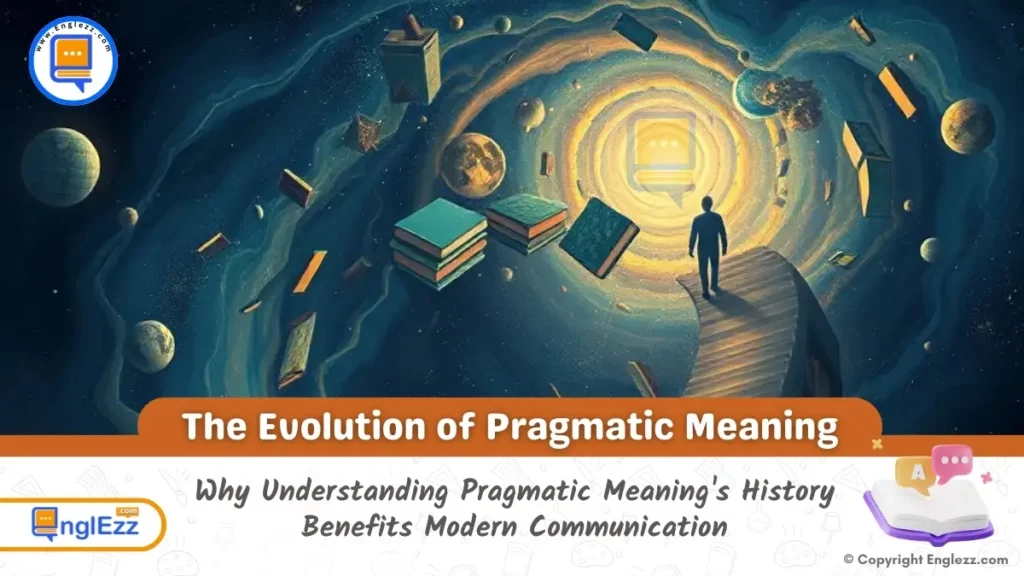
Further on we enter the classical period, where a lot of view of the world is still widely spread across the shared philosophies of the Greeks and Romans. Dialogues of Socrates, Plato, and Aristotle challenged concepts of reality and existence, forming seemingly pragmatic philosophy. In the ancient world, where the foundations of pragmatic meaning were established in early civilizations and reflected in their philosophies, myths, and communal practices.
- an example of this can be seen in Mesopotamia; the Sumerians shaped a worldview that pilgrimage of life, of the divine permeated everyday existence, incalculably influencing everything from their agriculture to their social structures — all grounded to their religious belief systems.
Weaving in with this intertwining of faith and practice is the Ancient Egyptian concept of ma’at, an idea with cosmic and earthly implications that guided the ancient Egyptian on both their everyday thoughts as well as moral decisions.
Further on we enter the classical period, where a lot of view of the world is still widely spread across the shared philosophies of the Greeks and Romans. Dialogues of Socrates, Plato, and Aristotle challenged concepts of reality and existence, forming seemingly pragmatic philosophy.Their explorations of a quest for virtue, ethics, and happiness brought paradigms that affect contemporary thought to this day. The Stoics, in their focus on reason and self-restraint in overcoming challenges in life, espoused a practical method of deriving meaning in terms of acquiescence to fortune and virtue.
Moving forward to the Middle Ages, one finds that religious tales came to dominate in defining existence. All of these religions offered unique interpretations of existence, often coupling spiritual desires with practical advice on living ethically. The writings of theologians Augustine and Aquinas speak to a continued quest to synthesize reason and faith, showcasing practical meaning in terms of religious belief.
The Renaissance was a time of return to humanism in that philosophers came to place a high value on individual experience and empirical facts. The era was a time of turning point in that it was a time when art, science, and philosophy combined to redefine a meaningful existence. Leonardo da Vinci and Galileo Galilei typified this new zeitgeist in that they coupled creativity with inquiry, encouraging society to pursue knowledge in terms of artistic creation as well as in scientific inquiry.
The contemporary era was a time when emergence of existentialism brought a return to individual freedom of action and subjective experience to human existence. The philosophers Kierkegaard, Nietzsche, and Sartre wrestled with absurdity and freedom, challenging dominant conceptions of meaning in that they espoused that it was up to each individual to derive their own meaning in a supposedly indifferent universe. This conception of existentialism challenges one to question how individual decisions inform our conception of existence in a more multifaceted society.
As we approach contemporary debates of practical significance, we also need to account for globalization and new technologies. The confluence of various cultures has brought a mosaic of varied visions of existence, leading to cross-national debates transcending geography. Humanity is at a crossroads today in which old knowledge coexist side by side with new interpretations, providing a chance to synthesize that can enrich our collective knowledge.
Conclusionally, a cross-cultural review of practical significance shows a dynamic dialogue between religion, philosophy, art, and science. As we navigate our own ways in this dynamic age, let us learn from our seniors yet be open to be challenged by new ideas that question our visions of existence. The process is never-ending, and each generation is in a position to redetermine that it is to live a meaningful existence in their time.
The Forgotten Art of Pragmatic Meaning
As we begin to untie the old string of practical meaning, we stand at the beginning of a forgotten craft. The craft of practical meaning, a mere commonplace of everyday speech, has been silently put aside to rest in a forgotten corner of the shelves of time. And yet, its significance is just as high today as it was in times of olden day. In a day when language’s subtlety is smothered in digital haze, the significance of practical meaning cannot be over-emphasized.
Practical meaning, in its purest form, is the craft of expressing that implied, yet unspoken. The delicate yet forceful way in which we use language to indicate our intent, our ideals, our emotions. This old craft has been embroidered in human speech, making it possible for us to be able to express complex emotions and concepts in precision and finesse. From the delicate shades of pitch and tone to the measured use of word and sentence, practical meaning is language’s unheralded hero.
As we explore the realm of practical meaning, we shall take you on a tour of the way in which it has been used throughout human time to build society, guide society, and human to human. We shall explore the way in which it has been used by leadership, artists, and minds to get their message across, inspire their mob, and leave a legacy that would be felt throughout generations to come. And, in untangling the old string of practical meaning, we shall unveil secrets to effective speech, laying bare the potential of language to define our vision of the world and our place in it.
What is Pragmatic Meaning?
As we endeavor to untie that frayed string of practical meaning, it is of paramount importance to start to get a handle on that fundamental notion at its origin. Practical meaning in plain English is that a word, a phrase, or a concept is not strictly dictionary or theory-defined, but in practical use and actual effects.
Take a word, such as home, associated with a material house, a place of belonging, a place of security and safety. But to a person displaced from home through war, persecution, or natural disaster, the word home brings to mind a sophisticated set of emotions, such as longing, loss, and reminiscence. Here is a classic example of how practical meaning is lived in human existence in all its complexity, subverting our initial expectations and broadening our vision of the world.
Pragmatic meaning here is not a matter of strict dictionary or conceptual meaning of a word or a concept, but of ways in which it is lived, practised, and negotiated in ordinary life. It is a matter of ways in which language is used to structure our perception, guide our action, and provide a sense of belonging and a perception of a collective knowledge. By looking at the practical meaning of words, phrases, and concepts, we can better enjoy the multifaceted and complex nature of human communication, and unravel the invisible threads that bind our collective knowledge of the world.
The Origin of Pragmatic Meaning in Ancient Philosophy
As we stroll in time’s corridors, we stand in the doorway of a distant era, in which the great minds of old Greece wrestled to define the nature of meaning. In this era of philosophic fervour, Aristotle and Plato wrestled with the Gordian knot of semantics, laying the path to a practical notion of meaning that would ring across centuries to be.
Under Acropolis’s canopy, Aristotle’s metaphysical explorations of existence and human knowledge led him to conclude that meaning is neither a product of language, but a reflection of the world in itself. His theory of “entelechy” – that a thing’s potentiality is actualised in its actuality – speaks a great deal to the dynamic, situational nature of meaning.
While in Acropolis’s background, Plato’s Platonic dialogues, namely, the “Cratylus,” probed the nature of language in terms of reality, laying bare the delicate ballet of the signifier and the signified. His theory of the ” Forms” – eternally existing, abstract entities that capture the essence of reality – speaks to the notion that meaning is grounded in a higher, more fundamental reality beyond human perception’s brief duration.
These philosophers of old, in their pursuit of knowledge, unknowingly bequeathed to us a fertile legacy of thought, one that speaks to our notion of practical meaning to this day. As we struggle to navigate contemporary existence’s quagmire, we would do well to revisit these timeless savants, to stir again the fire of inquiry that burned brightly across centuries to be, and to revive the quest for meaning that has always been human endeavor’s essence.
The Rise of Pragmatic Meaning in Recent History
As the 20th century evolved to the 21st, a fundamental revolution in our understanding of meaning gained traction. The rise of pragmatic meaning in our time is a function of the convergence of a set of forces. The advancement of systems in the world, coupled with the escalated rhythm of advances in technology, brought a sharpened appreciation of the need for practical, useful, and actionable knowledge. This brought a more sophisticated appreciation of meaning, one that emphasized its contextual and relational nature.
The spread of digital media platforms, social media, and online forums also facilitated this process, as human beings increasingly utilized concrete, experiential, and socially constructed means of making meaning. The rise of postmodernism, also with its interest in fragmentation and decentring of canonical narratives, also facilitated growing appreciation of pragmatic meaning as a serious and practicable means of making meaning.
Pragmatic meaning came to become a force to be contended with in contemporary society, informing our way of thinking, our modes of communication, and our relationships to one another. The effects of this trend permeate every aspect of our existence, from our method of learning and knowledge-generation, to our ways of addressing multifaceted social and cultural challenges. In this chapter, we shall take a close examination of forces of history and influences of culture that helped to fuel the emergence of pragmatic meaning in our time, and their effects on our understanding of meaning and reality.
The Evolution of Pragmatic Meaning in the 20th Century
As the 20th century went forward, theory of pragmatic meaning was transformed. The beginning of the new era was welcomed with a tide of intellectual and philosophic currents that challenged earlier established modes of perceiving language and meaning. The beginning of logical positivism, for instance, introduced a new wave of interest in empirical and scientific properties of language, with philosophers such as Bertrand Russell and Ludwig Wittgenstein going ahead to build a more austere and methodical approach to defining nature of reality.
Parallel to this, during that time, birth of linguistic philosophy, guided by scholars such as Ferdinand de Saussure and Noam Chomsky, introduced new modes of perceiving the role of language in defining our perception of the world. The view that meaning is not static, but is created in a dynamic process of interaction of forces of language and of culture, was a leitmotiv in analysis of language and of communication.
Against such a background of intellectual storm, theory of pragmatic meaning continued to be developed, as scholars such as George Herbert Mead and Herbert Blumer explored ways in which social and cultural contexts build up meaning. The view that meaning is not a product of mental processes of an individual, but is created in a process of interaction between and among actors, was increasingly in vogue.
The intersection of philosophy, linguistics, and sociology thus set the background for a more advanced understanding of pragmatic meaning, one that was sensitive to making meaning in a dynamic, contextual way. As the close of the 20th century arrived, the platform was set for a new generation of investigation that would continue to sharpen and broaden our understanding of the many-faceted, multifaceted notion of pragmatic meaning.
The Impacts of Pragmatic Meaning in Today’s World
As one navigates the labyrinth of pragmatic meaning, it is more apparent than ever that its impacts are not to be found in the olden tomes of yesterday. The old string of pragmatic meaning has been embroidered throughout the very fabric of modern society, making a permanent mark on our way of living, our way of talking, and our interaction with one another. The nuances of pragmatic meaning have permeated our day-to-day speech, informing our way of creating relationships, ending disagreements, and coping with the ups and downs of human interaction.
Today, in our age of digital media, in which information is transmitted at unprecedented speeds, the concept of pragmatic meaning is a key to effective dialogue. The ability to convey meaning in a brief, unambiguous way has become a fundamental competency in personal and professional settings. Whether a social media post, a business presentation, or a friendly conversation, the pragmatic meaning of our speech has the potential to define our relationships, build trust, and open up understanding.
Moreover, the impact of pragmatic meaning can be seen in our conflict resolution approach. By acknowledging the pragmatic meaning of a person’s words, one is more likely to navigate the human emotions in their complexity and discover areas of commonality. The ability to ‘read between the lines‘ is a basic competency in today’s busy, often combative society.
So, in a sense, the exploration of pragmatic meaning is not just a pedantic exercise in antiquity, but a key tool for building bridges, promoting empathy, and acquiring a more profound knowledge of self and other human beings. As we continue to unravel the frayed string of pragmatic meaning, we may find a treasure house of knowledge that can lead us in overcoming the challenges of modern society, and even build a more harmonious and human society.
The Multiple Interpretations of Pragmatic Meaning
As one embarks to navigate the labyrinth of pragmatic meaning, one finds one moving across a multifarious web of diverse interpretations. Much like a rich tapestry is woven of diverse threads, each standing for a different school of philosophy, the texture of pragmatism is woven of diverse threads, each standing for a different school of thought. The theory of pragmatic meaning, once a monolithic concept, is a many-sided affair, a plethora of schools of thought vying for recognition.
For philosophers like Charles Sanders Peirce in the realm of pragmatism, meaning was a dynamic, evolving process that was shaped by human beings’ interaction with their environment. In Peirce’s opinion, meaning was not a static concept, but a dynamic one that was a product of collective human actions and experiences. The perception highlights the importance of context and of language in structuring our perception of the world.

In contrast, there were also other philosophers, such as William James, emphasizing individual experience and subjective nature of meaning. In James’s opinion, pragmatic meaning was a subjective, intuitive concept that was conditioned by one’s outlooks and experiences. The school of view brings to the fore the significance of individual agency and individual experience in constructing our view of the world.
Besides that, there is also the contribution of philosophers such as John Dewey and George Herbert Mead to the richness of pragmatic meaning. Dewey’s theory of instrumentalism conceived of meaning in terms of a means to a practical end, while Mead’s social behaviorism theory emphasized social interaction in constructing our view of the world.
As we continue to untie the string of pragmatic meaning, we find that we navigate a multidimensional terrain of varied outlooks, each offering a different explanation of the nature of meaning and reality. The question of pragmatic meaning is a multidimensional one, a richness of varied outlooks, each offering a different explanation of the multidimensional nature of reality.
Criticism of Pragmatic Meaning
As we get deeper inwards in the maze of pragmatic meaning, it is inevitable that we carry the burden of criticism that has been brought to bear to this concept. Scholars and philosophers have been criticizing the theory of pragmatic meaning for centuries, posing serious questions on its verity and usefulness in our modern view of language and reality. From a logical positivist stance, there are those that believe that pragmatic meaning is too subjective and circumstance-dependent, lacking a distinct and objective structure to guide one to know the world.
Others have complained that pragmatic meaning is too individual-oriented, excluding collective and social dimensions of making meaning. Such a criticism has been mirrored by feminist scholars, who point out that dominant discourse of pragmatic meaning has been shaped by and perpetuates patriarchal ideals and power structures. Moreover, theory of pragmatic meaning has been challenged by poststructuralist scholars, who argue that meaning is neither static nor fixed, but is constantly in flux and open to multiple readings.
The theory of pragmatic meaning is nevertheless a compelling and dominant theory in linguistics, philosophy, and anthropology. By acknowledging such critiques, we can continue to refine and elaborate our theory of pragmatic meaning, adding to our knowledge of multifaceted nature of human communication.
The Rewards of Pragmatic Meaning
As we move deeper in the labyrinth of meaning, we stand at the threshold of a great epiphany: that strength of pragmatic meaning lies not in its abstract theory, but in its concrete, here-and-now applications. This is where theory is converted to practicality, theory is brought to action, and mysterious is converted to quotidian.
The rewards of pragmatic meaning are multifarious and varied. One, it allows us to simplify multifaceted concepts to action-oriented, step-by-step processes. No more need we get bogged in theory’s detail, but instead, it allows us to be interested in practical, experiential nature of our work. This, in turn, allows us to make actual progress, to see concrete results, and to reap fruits of our labor.
Furthermore, pragmatic meaning permits us to bridge the gap between theory and reality, between ivory tower and actuality. By connecting our knowledge to the concrete, we get a more sophisticated, multifaceted vision of the world around us. This permits us in turn to navigate more easily the vicissitudes of existence, to make more informed decisions, and to get a profounder sense of direction and purpose.
Simply, the payoffs of pragmatic meaning are limitless. By embracing it, we can unlock secrets of the aged thread, and open up a sphere of practical, useful applications that can revolutionize our lives and our world.
The Future of Pragmatic Meaning
As we plumb yesterday’s depths, we stand in today’s doorway, with tomorrow’s possibilities spreading in a unmapped horizon. And yet it is here, in yesterday’s crossroads of yesterday, today, and tomorrow, that we must face up to the burning question: what is to become of the notion of pragmatic meaning?
The future of pragmatic meaning is a cloudy one, a fog of unknowing. Is it to continue to evolve, to adapt to accommodate the constantly shifting terrain of human communication? Or is it to become static, a relic of a forgotten era, to be consigned to collecting dust in time’s archives?
One thing is certain, though: the future of pragmatic meaning is going to be forged in that dynamic crucible of social revolutions, technological advances, and humanity’s never-ending struggle to be understood. As we hurtle forward, driven by that unstoppable tide of innovation, we must stay tuned in, attuned to that faint resonance of change that is going to reshape the texture of pragmatic meaning.
The future is unknowable, of course, but one thing is certain: our odyssey of discovery to that great beyond is going to be guided by that same question that has guided us to this point: that quest for wisdom, that quest for meaning, and that timeless quest for that string that binds us all.
How to Incorporate Pragmatic Meaning in Your Life
As we navigate the fertile terrain of pragmatic meaning, we stand at that crossroads of day-to-day existence and philosophy. How can you, as a human, apply the timeless principles of pragmatic meaning to day-to-day existence and imbue it with more meaning? The key lies in embracing that simplicity of this notion and incorporating it into our day-to-day routines.
Wake up every day feeling a sense of purpose, driven by that realization that every action, every decision, every interaction has the potential to insert a string of meaning in the texture of our existence. This is not a quest for great, monumental experiences, but a quest to find loveliness in the ordinary, in the prosaic, in oft-overlooked crevices of existence.
By applying practical meaning to our lives, we can transform the way in which that we face challenges, relationships, and personal development. We can be more present, more attuned, and more deliberate, better equipping us to face the challenges of life in a more informed, more deliberate way. It is not a question of achieving great ends, but of existing in harmony with the here and now, and finding significance in the small details that make up our lives.
As we follow this path of self-discovery, we will find that the power of practical meaning is there to guide us to a more satisfying, genuine, and meaningful life. By embracing the simplicity of this process, we can open doors to personal development, and release the potential that it has to transform our lives.
Case Studies of Practical Meaning in Action
As we move in the world of practical meaning, it is important that we take a review of the multifaceted mosaic of its appearances throughout time. The case studies that follow give a glimpse of practical meaning in action, of the multifaceted way in which words, symbols, and action have been used to transmit significance and intent.
- From Egypt’s hieroglyphs, in which pharaohs and gods related their stories, to Christendom’s elaborate illuminated manuscripts, in which doctrines of Christian belief were passed on, each example speaks to the power of practical meaning in constructing human knowledge and message.
In the realm of art, Marcel Duchamp’s paintings, in which he created artworks using everyday objects by imbuing them with new significance, demonstrate the adaptability of pragmatic meaning. Similarly, T.S. Eliot’s poems, in which he combined disparate bits of myth and literature to generate a sum that was more than its parts, demonstrate that pragmatic meaning is dynamic.
Not only do these case studies demonstrate the breadth of pragmatic meaning in use, but also indicate its continued applicability in constructing human knowledge, culture, and communication. By looking to threads of pragmatic meaning that have been threaded throughout time, it is possible to better appreciate the multifaceted nature of human expression and the way in which it continues to guide our knowledge of the world
The role of Culture in Constructing Pragmatic Meaning
As one delves deeper in the multifaceted texture of pragmatic meaning, it is more evident that the texture of our knowledge is inextricably enmeshed in the culture that permeates our lives. The role of culture in constructing pragmatic meaning is a thread that is threaded throughout the very texture of human existence, pervading the way in which that we perceive, interpret, and apply meaning in our lives.
Like a skilled weaver, our culture colors our perception, our beliefs, and our values, often without our even knowing it. The customs and traditions that we are born to, that we learn in our lifetimes, all tell our conception of the world and our place in it. From our means of communicating and relating to one another, to our means of problem-solving and decision-making, our culture is a omnipresent and omnipresent force that dictates our pragmatic meaning.
It is in terms of our culture that we can start to unravel the complications and subtlety of pragmatic meaning, and in which ways it is shaped and influenced by the world around it. By viewing our lives in terms of their cultural context, we can better appreciate the ways in which our conception of the world is constructed, and in which ways that we can work to craft and hone our pragmatic meaning in order to better navigate the complications of our existence.
Comparing Pragmatic Meaning Across Cultures
As we navigate the maze of pragmatic meaning, it is increasingly apparent that the string of understanding is not geographically or culturally bounded. Like a rich tapestry, material of meaning is woven of many threads, each one imbued in the subtlety of a particular culture. The challenge to untie the frayed string of pragmatic meaning is to set forth a path across cultures, in which we can discover the deep congruencies and dramatic contrasts that lie between them.
In this section, we cross over to the field of cultural anthropology, in which we will be studying how language, symbols, and rituals inform our view of the world. We will be looking at how various cultures evolved distinct systems of pragmatics, diverse in nature, yet linked to a unifying string of human existence. From elaborate rituals of old civilizations to today’s subtlety of global communication, we will be untying the complex texture of pragmatic meaning that is woven across cultures.
As we navigate across this cross-cultural terrain, we will be shown compelling evidence of various means in which various cultures have interacted with the concept of pragmatic meaning. We will be learning of how the old Greeks used mythological stories to convey sophisticated advice of morals, and of how the Japanese use the concept of “wa” (harmony) to navigate social relationships. We will also be looking at how today’s globalization has birthed new systems of pragmatics, driven by collision of technologies and cultures.
By laying open the multifaceted nature of pragmatic meaning across cultures, we will be better able to enjoy the richer, more complex tapestry underlying human communication.
Conclusion: Untangling the Timeworn Thread
As we reach our odyssey across the twisting corridors of time, we stand at the precipice of a profound realization. The string that has hitherto guided us, though frayed thin, has led us to the texture of our existence. The frayed string, once a trite notion, has been untangled to reveal the elaborate texture of human existence. We have been witness to unfolding of language, birth and death of civilizations, and unifying strength of human bond.
Through the turns and turns of this narrative, we’ve learned that the practical use of language is not a static entity, but a dynamic force that is always in motion, shaped by the vagaries of human history. We’ve learned to watch as the string of language was threaded and unstrung, to be retread in new patterns of meaning that define our world.
As we exit this process, we stand in awe of the frayed string that brought us here. We’ve learned that the string of language is more than a means of transmitting meaning, it is a reflection of our humanity. It is a reflection of our ability to create, to adapt, and to transform, and it is a reminder that our past is always in our present.
As we untie the frayed string, we stand in awe and in wonder at human language’s sheer complexity and beauty. We are reminded that our stories, our vocabulary, and our meanings are all threads in a great tapestry that is woven of our collective human existence. And it is this tapestry that keeps unfolding, that keeps transforming, that keeps evolving, even when we struggle to unravel the challenges of our present
As we navigate our way through those twisted threads of time, we discover that we’ve been left with a profound appreciation of that intricate tapestry that’s been woven to define that concept of pragmatic meaning. From philosophers of old in ancient Greece to philosophers of today, we’ve unravelled that knotted narrative of human understanding over time.
Using language, society, and culture, we’ve again and again plucked that string of meaning, re-drawing it to produce a multifaceted, rich understanding of human existence. As we move forward again towards tomorrow, we’re reminded that the pursuit of pragmatic meaning is a never-ending, constantly evolving process, one that will continue to inform our understanding of our existence and of existence in our world around us.

